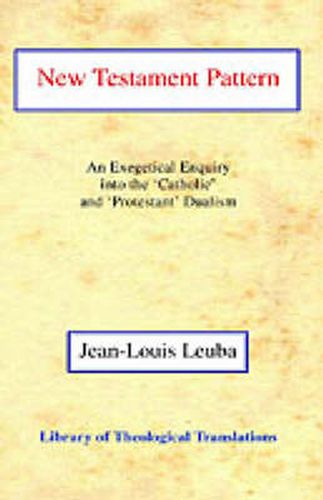Readings Newsletter
Become a Readings Member to make your shopping experience even easier.
Sign in or sign up for free!
You’re not far away from qualifying for FREE standard shipping within Australia
You’ve qualified for FREE standard shipping within Australia
The cart is loading…






The author shows that the New Testament pattern of unity is two-fold. It is a pattern of complementarity, not of uniformity. One emphasises the institutional, traditional and particular: the other the persona, dynamic and universal. Yet the two are one. What is the nature of Christian unity? Is it Sacramental, Organic, Federal, Spiritual. These are questions that demand careful examination when the different Christian traditions are drawing closer to one another in a common desire to heal the divisions which hinder the witness of the Church to the world. In any attempt to deal with these questions full weight must be given to the evidence of the New Testament itself. What kind of unity does it reveal? The author sees a two-fold pattern of unity in the New Testament. One strand in its witness to Christ, to the Apostles, and to the Church emphasises the institutional, traditional and particular; the other the persona, dynamic and universal. Yet the two strands are actually one. Their unity is more comprehensive, more creative, than any undifferentiated unity could be. To establish this thesis and to suggest some of its implications is the purpose of Leuba’s stimulating book.
$9.00 standard shipping within Australia
FREE standard shipping within Australia for orders over $100.00
Express & International shipping calculated at checkout
The author shows that the New Testament pattern of unity is two-fold. It is a pattern of complementarity, not of uniformity. One emphasises the institutional, traditional and particular: the other the persona, dynamic and universal. Yet the two are one. What is the nature of Christian unity? Is it Sacramental, Organic, Federal, Spiritual. These are questions that demand careful examination when the different Christian traditions are drawing closer to one another in a common desire to heal the divisions which hinder the witness of the Church to the world. In any attempt to deal with these questions full weight must be given to the evidence of the New Testament itself. What kind of unity does it reveal? The author sees a two-fold pattern of unity in the New Testament. One strand in its witness to Christ, to the Apostles, and to the Church emphasises the institutional, traditional and particular; the other the persona, dynamic and universal. Yet the two strands are actually one. Their unity is more comprehensive, more creative, than any undifferentiated unity could be. To establish this thesis and to suggest some of its implications is the purpose of Leuba’s stimulating book.